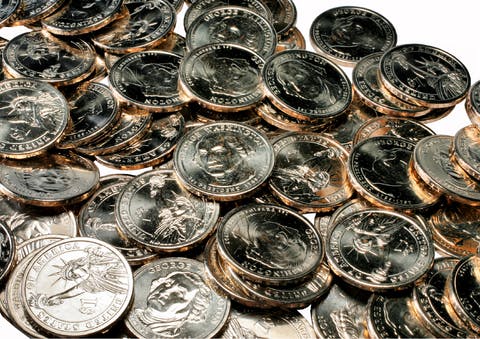We all know people have a resistance to change but who would have guessed that the folks producing change (the currency that is) would encounter those problems?
Such is the story of the U.S. Mint and the continued failure of the dollar coin to take hold. As the BBC writes:
Congress passed the law creating the coins despite evidence that Americans never liked the $1 coin in the past.
In a 2002 report, for instance, the investigative arm of Congress described “public resistance to begin using the dollar coin” despite a three-year, $67 million (£42m) effort to promote the previous series.
Since the presidential coin program began, the U.S. government has spent an additional $30 million to promote them but they still have not taken hold.
Millions of dollars spent to promote change and it didn’t go so well? Say it ain’t so!
The pain of change
All joking aside, there are some serious questions to be raised about how and why this program has been allowed to go on for so long with such little success. After all, the concept seems sound. While initially more expensive to produce, metal based currency lasts significantly longer than any paper currency. If you’ve ever had a handful of change, you probably have seen coins from three-four decades of production.
Yet there has long been a resistance to adopting the currency. Whether it be silver dollars, Susan B. Anthony, or Sacajawea dollars, the concept has not taken off.
Sound familiar? If you’ve ever led a corporate change initiative, you probably know this all too well. Management decides to change something based on a well measured study of the situation, but the implementation of the process goes disastrously wrong.
Something went wrong
The problem with U.S. Mint is probably one you’ve dealt with in your own organization. And the issues are multi-faceted:
- If you give people the choice to stick with what they know (keep using paper currency) or a new, but better, system (use new dollar coins), people will choose what they know and are familiar with. As long as the choice is available, people will use paper.
- Consumers and retail outlets got stuck in a cycle of both rejecting the coins because retailers never carried them, and, because consumers never used them. Pushing one of these groups to adopt it would have a wholesale effect on the other. And it would have been cheaper to attract retailers to the program.
- Not considering the human factors of change cost the government millions of dollars in unnecessary costs. Instead of promoting the idea, they should have been working with retailers and banks to pull back production of paper currency to drive consumer demand.
While it is a sound idea, the cost of change in this case has to be measured in more than dollars and cents. It has to measured by the human impact and apprehension to change to fully understand and plan for these sorts of events better in the future.
